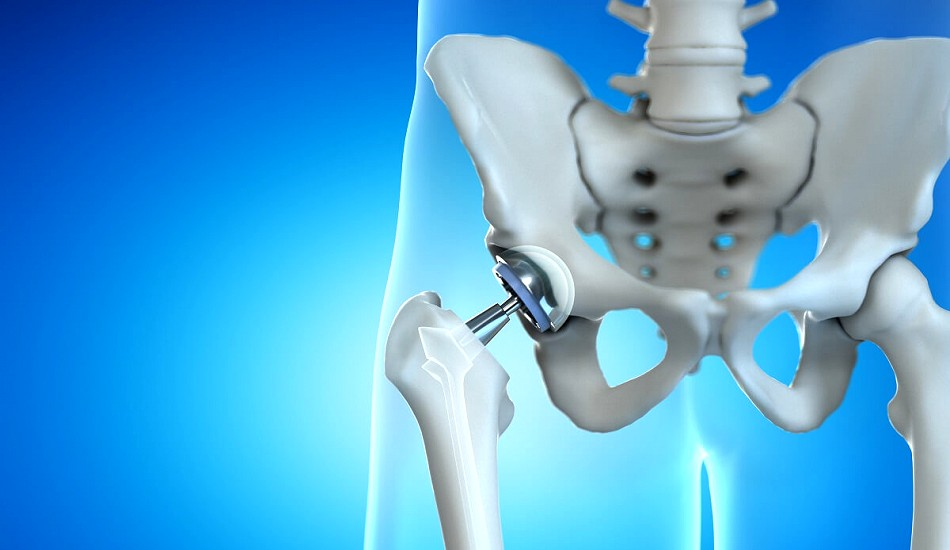Hip replacement surgery, specifically right hip total replacement, has become a common and effective solution for individuals suffering from severe hip pain due to conditions such as osteoarthritis, rheumatoid arthritis, avascular necrosis, or hip fractures. Here, in this guide we’ll understand the reasons for the procedure, what to expect during and after surgery, recovery timelines, and the benefits of choosing this transformative operation.
What is Right Hip Total Replacement?
A right hip total replacement, or right total hip arthroplasty (THA), involves the surgical removal of the damaged or diseased parts of the hip joint and their replacement with artificial components. The surgery typically involves the following components:
- Femoral Component: This is a metal stem that is inserted into the thigh bone (femur) with a metal ball attached at its top, which replaces the natural hip joint’s ball.
- Acetabular Component: This component is placed in the hip socket (acetabulum) and is usually made of a combination of metal and plastic. It acts as a new socket for the ball of the femoral component.
- Polyethylene Liner: This plastic insert sits between the ball and the socket to facilitate smooth movement and reduce friction.
Indications for Surgery
The decision to proceed with a right hip total replacement is generally based on several factors:
- Severe Pain: Persistent pain that limits daily activities, such as walking, climbing stairs, or getting in and out of cars.
- Reduced Mobility: Stiffness or a reduced range of motion in the hip joint.
- Ineffective Conservative Treatments: Failure of non-surgical treatments like medications, physical therapy, and lifestyle changes to alleviate symptoms.
- Joint Deformity: Visible changes in the hip joint due to degenerative diseases or injury.
Preparing for Surgery
Before undergoing right hip total replacement, patients will typically go through several preoperative steps:
- Consultation: A thorough evaluation by an orthopedic surgeon, including medical history and physical examination.
- Imaging Tests: X-rays or MRIs to assess the extent of joint damage.
- Blood Tests: Routine blood tests to check for any underlying health issues.
- Preoperative Instructions: Guidance on medications, dietary restrictions, and pre-surgery preparations.
The Surgical Procedure
Right hip total replacement is usually performed under general or spinal anesthesia and typically lasts about 1 to 2 hours. The key steps in the surgery include:
- Incision: A surgical incision is made over the hip to access the joint.
- Removal of Damaged Tissue: The damaged bone and cartilage are removed from the femur and acetabulum.
- Implantation of Components: The femoral component is inserted into the femur, and the acetabular component is secured in the hip socket.
- Closure: The incision is closed with sutures or staples, and a sterile dressing is applied.
Recovery Process
Post-surgery recovery is crucial for optimal healing and regaining mobility. Here’s what to expect:
- Hospital Stay: Patients usually stay in the hospital for 1 to 4 days post-surgery, depending on their overall health and the complexity of the surgery.
- Pain Management: Pain relief is managed through medications, including opioids, nonsteroidal anti-inflammatory drugs (NSAIDs), and acetaminophen.
- Physical Therapy: A physical therapist will assist with rehabilitation exercises to strengthen the hip and improve range of motion. Patients are typically encouraged to start walking with the aid of a walker or crutches within a day or two after surgery.
- Home Care: Patients may need assistance at home, including help with daily activities and transportation to follow-up appointments.
Expected Recovery Time
- First Week: Focus on pain management and starting light physical therapy. Patients are usually encouraged to bear weight on the operated leg with assistive devices.
- 2 to 6 Weeks: Continued physical therapy to regain strength and mobility. Many patients can return to low-impact activities, such as walking or swimming.
- 6 Weeks to 3 Months: Significant improvement in mobility and a gradual return to normal activities, including work and driving, depending on individual recovery.
- 3 to 6 Months: Most patients can resume regular activities, including low-impact sports, with many experiencing a substantial reduction in pain and improved quality of life.
Benefits of Right Hip Total Replacement
- Pain Relief: The most immediate benefit is significant pain reduction, allowing patients to return to daily activities and enjoy a more active lifestyle.
- Improved Mobility: Enhanced range of motion and mobility can lead to improved overall physical health and well-being.
- Better Quality of Life: Patients often experience an improved quality of life as they can engage in activities they once enjoyed, such as walking, exercising, and socializing.
- Durability: Modern hip implants are designed to last 15-20 years or more, depending on a patient’s age, weight, and activity level.
Risks and Considerations
While right hip total replacement is generally safe, as with any surgery, there are potential risks and complications, including:
- Infection: Risk of infection at the surgical site.
- Blood Clots: Potential for deep vein thrombosis (DVT) or pulmonary embolism.
- Dislocation: Risk of the hip joint dislocating after surgery.
- Implant Failure: While rare, implants can fail or wear out over time.
Conclusion
Right hip total replacement surgery or revision total hip replacement can dramatically improve the quality of life for individuals suffering from chronic hip pain and limited mobility. Understanding the procedure, preparing adequately, and following a structured recovery plan are vital to achieving successful outcomes. If you or a loved one is considering this surgery, consult with a qualified orthopedic surgeon at Dr. Simon Thomas in India, to discuss your options and what to expect on the journey toward recovery. With advances in surgical techniques and rehabilitation, patients can look forward to a more active, pain-free life post-surgery.











